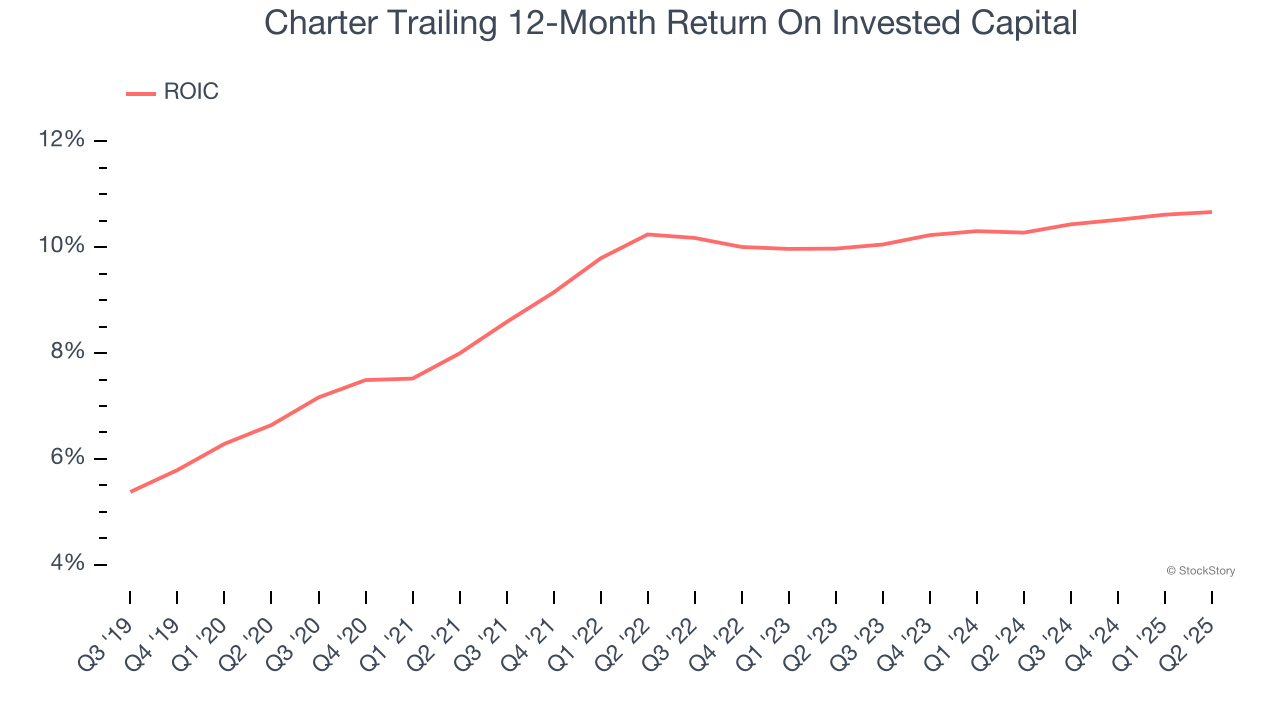
What a brutal six months it’s been for Charter. The stock has dropped 29% and now trades at $261.50, rattling many shareholders. This was partly driven by its softer quarterly results and might have investors contemplating their next move.
Is now the time to buy Charter, or should you be careful about including it in your portfolio? Get the full breakdown from our expert analysts, it’s free.
Why Is Charter Not Exciting?
Even though the stock has become cheaper, we're swiping left on Charter for now. Here are three reasons there are better opportunities than CHTR and a stock we'd rather own.
1. Inability to Grow Internet Subscribers Points to Weak Demand
Revenue growth can be broken down into changes in price and volume (for companies like Charter, our preferred volume metric is internet subscribers). While both are important, the latter is the most critical to analyze because prices have a ceiling.
Over the last two years, Charter failed to grow its internet subscribers, which came in at 29.9 million in the latest quarter. This performance was underwhelming and implies there may be increasing competition or market saturation. It also suggests Charter might have to lower prices or invest in product improvements to accelerate growth, factors that can hinder near-term profitability. 
2. Projected Revenue Growth Shows Limited Upside
Forecasted revenues by Wall Street analysts signal a company’s potential. Predictions may not always be accurate, but accelerating growth typically boosts valuation multiples and stock prices while slowing growth does the opposite.
Over the next 12 months, sell-side analysts expect Charter’s revenue to stall, close to its 3.4% annualized growth for the past five years. This projection is underwhelming and implies its newer products and services will not accelerate its top-line performance yet.
3. Previous Growth Initiatives Haven’t Impressed
Growth gives us insight into a company’s long-term potential, but how capital-efficient was that growth? A company’s ROIC explains this by showing how much operating profit it makes compared to the money it has raised (debt and equity).
Charter historically did a mediocre job investing in profitable growth initiatives. Its five-year average ROIC was 9.8%, somewhat low compared to the best consumer discretionary companies that consistently pump out 25%+.

Final Judgment
Charter isn’t a terrible business, but it doesn’t pass our bar. After the recent drawdown, the stock trades at 6.3× forward P/E (or $261.50 per share). While this valuation is optically cheap, the potential downside is big given its shaky fundamentals. We're fairly confident there are better investments elsewhere. Let us point you toward the Amazon and PayPal of Latin America.
Stocks We Would Buy Instead of Charter
Donald Trump’s April 2025 "Liberation Day" tariffs sent markets into a tailspin, but stocks have since rebounded strongly, proving that knee-jerk reactions often create the best buying opportunities.
The smart money is already positioning for the next leg up. Don’t miss out on the recovery - check out our Top 9 Market-Beating Stocks. This is a curated list of our High Quality stocks that have generated a market-beating return of 183% over the last five years (as of March 31st 2025).
Stocks that made our list in 2020 include now familiar names such as Nvidia (+1,545% between March 2020 and March 2025) as well as under-the-radar businesses like the once-micro-cap company Tecnoglass (+1,754% five-year return). Find your next big winner with StockStory today.
StockStory is growing and hiring equity analyst and marketing roles. Are you a 0 to 1 builder passionate about the markets and AI? See the open roles here.
